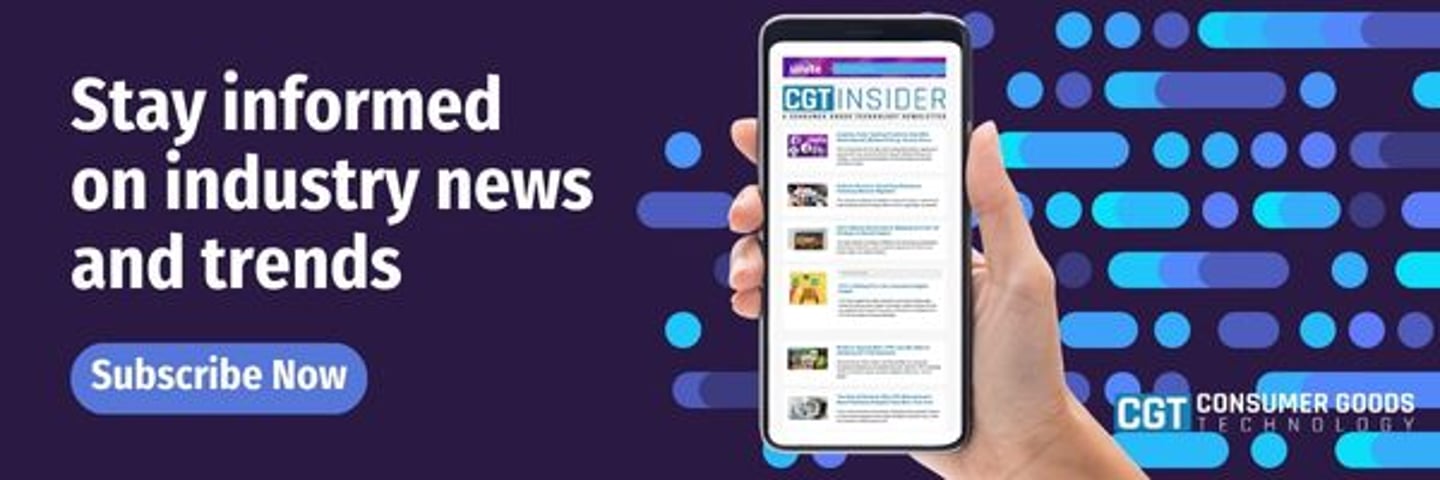How is IoT Used in Supply Chain?
The Internet of Things (IoT), which is broadly defined to include a network of devices and the technology used for the devices to communicate with each other and into cloud technology, can play a valuable role in the supply chain. For example, IoT supply chain applications include monitoring the status of goods and shipments in real-time, optimizing routes via geolocation, and managing inventory efficiently, says Dr. Ilya Jackson, Postdoctoral Associate at MIT Center for Transportation and Logistics.
“It's also used in the preventive maintenance of machinery, thus minimizing downtime and enhancing smart warehousing with automation,” he notes.
And while not new, IoT carries great potential to unlock further value for AI in the supply chain, and it’s on the radar for many leaders. When asked about their current and future supply chain innovation plans, 35% of retailers and consumer goods manufacturers in a November 2022 CGT/EnsembleIQ study said they had already implemented IoT devices while another 24% planned to add them. Twenty-three percent said they didn't have any plans to add them but wanted to learn more, and just 17% said they weren't interested or didn't know (or it wasn’t applicable to them).
When exploring their investment strategies, leaders may find that AI and IoT in the supply chain carry a host of similar advantages and disadvantages.
How does IoT benefit the supply chain?
In looking at the benefits of IoT in supply chain, Jackson points to:
- Improved transparency via real-time tracking
- Enhanced efficiency via optimal use of resources
- Decreased operational costs via predictive maintenance
- Improved decision-making by collecting data from various points in the supply chain
“IoT essentially provides real-time situational awareness that allow for rapid preventive measures or continuous learning in the case of pattern recognition,” says Adheer Bahulkar, global supply chain lead of Accenture’s consumer goods and industry practice. “Usage of IoT is currently most significant in 4-wall operations for Manufacturing and Warehousing, as well as in Transportation for real time inventory visibility and all the way to points of sale in Retail to predict out-of-stocks and gauge consumer sentiment.”
What is an example of IoT in the supply chain?
Here’s an example of an IoT in supply chain case study: Heineken developed a Connected Brewery Ecosystem that marries an IoT platform with apps and analytics to optimize its manufacturing and distribution. The combination of technologies enables the alcohol beverage company to view operational performance indicators in real time on a scale that was previously impossible.
What are the disadvantages of IoT?
As with all emerging technologies, use of IoT isn’t all sunshine and roses. For one thing, it has the potential to overburden companies that aren’t prepared to manage their complexity and the data they provide. “For retailers, data continues to proliferate at exponential speeds,” notes IDC in its FutureScape: Worldwide Retail 2023 Predictions report. “Every new Internet of Things (IoT) sensor, camera in the store, or back-end technology solution creates another integration point that must interface with legacy data systems.”
What’s more, it can be difficult to truly unlock the value of IoT without having the right talent. “It requires technical competencies that may not exist within a retailer's pre-existing supply chain/ business model,” notes Steve Statler, chief marketing officer and ESG lead at Wiliot, a provider of ambient IoT technology.
Other challenges of IoT in supply chain include the fact that IoT can require robust network connectivity for optimal use, which isn’t available in all regions. It’s important to note, however, that the progression of 5G is expected to propel commercial industrial IoT applications, including fully automated and smart factories, according to Steve Keonig, VP of research at the Consumer Technology Association.
“5G means faster mobile broadband for consumers,” he notes. “But for commercial industrial IoT applications, it's really the greater capacity and ultra-low latency that is going to unlock so much innovation, and we're going to see that across this decade.”
What is the future of IoT in the supply chain?
Coresight Research believes that IoT will become an important tool for sustainability and efficiency as artificial intelligence continues to advance, and the two can evolve together.
“As more retailers employ AI-enabled industrial robotics in warehouses, the sensors on these robots will be able to collect massive amounts of environment data and feed it in real time to warehouse operators and managers,” according to John Harmon, CFA, managing director of technology research at Coresight Research. “Comprehensive, descriptive datasets could include data about temperature, motion, lighting, GPS position, sound, and more — far beyond the capabilities of traditional sensors such as stationary cameras.”
What’s more, machine learning algorithms could analyze complex datasets to supply managers with actionable insights, predicting such factors as the labor capacity required at a warehouse, types of required transportation, and the optimal routes, he adds.



